The Collector’s Quiet Revolution: Why the Future of Art Buying Is Private
There was a time when here was a time when private art collecting collecting was highly performative. Ownership was about prestige, and the process was proudly public, tied to press mentions, gallery circuits, and external validation. The more visible your collection, the more serious you were considered. But that version of collecting is losing relevance among those who buy for deeper reasons.
Today’s emotionally intelligent collector is no longer drawn to spectacle. They’re not looking to prove anything. They’re not chasing trends, and they’re not buying to be seen. They’re seeking something quieter, something real. And more often than not, they’re looking for it in private.
This shift hasn’t made headlines, but it’s happening. Quietly. Intentionally. Powerfully.
Across the luxury sector, you can see it in the rise of invitation-only experiences, unlisted offers, and emotionally resonant works that bypass the marketplace altogether. Collectors are stepping out of the spotlight and reclaiming the emotional purpose behind their acquisitions. The work is no longer expected to signal power. It’s expected to hold presence. And the environments it’s chosen for, private homes, sanctuaries, places of personal meaning, are a reflection of that shift.
This isn’t a rejection of luxury. It’s a redefinition.
Privacy has become a form of emotional safety. And for many high-end collectors, that safety is now part of the value. The idea of walking into a public gallery, being asked to explain their taste, or justify their interest in a particular piece feels outdated, even intrusive. These buyers don’t want to be sold to. They want to connect. They want to feel something. They want to take their time. And they want to do it on their terms.
Art collecting, at this level, is no longer just about acquisition. It’s about intention. The act of living with a piece has become more important than the act of acquiring it. And that changes everything, from how the work is offered to how it’s experienced, from the energy behind the purchase to the emotional weight it carries after.
This quiet revolution isn’t a trend that will pass. It’s a movement toward something slower, more personal, and more sustainable. It’s what happens when thoughtful people with access and means start making different choices, not because they need to opt out, but because they want to opt in to something that feels more human.
Privacy, in this context, isn’t about secrecy. It’s about protection.
Not protection from others, but protection of something fragile, honest, and real. The kind of meaning that doesn’t need to be displayed to matter.
For many collectors, the deepest connection with a piece happens after it’s left the public view, once it’s hanging quietly in a room no one else will walk into. That’s where the shift is happening. Not in headlines, not in sales reports, but in private spaces where presence speaks louder than recognition ever could.
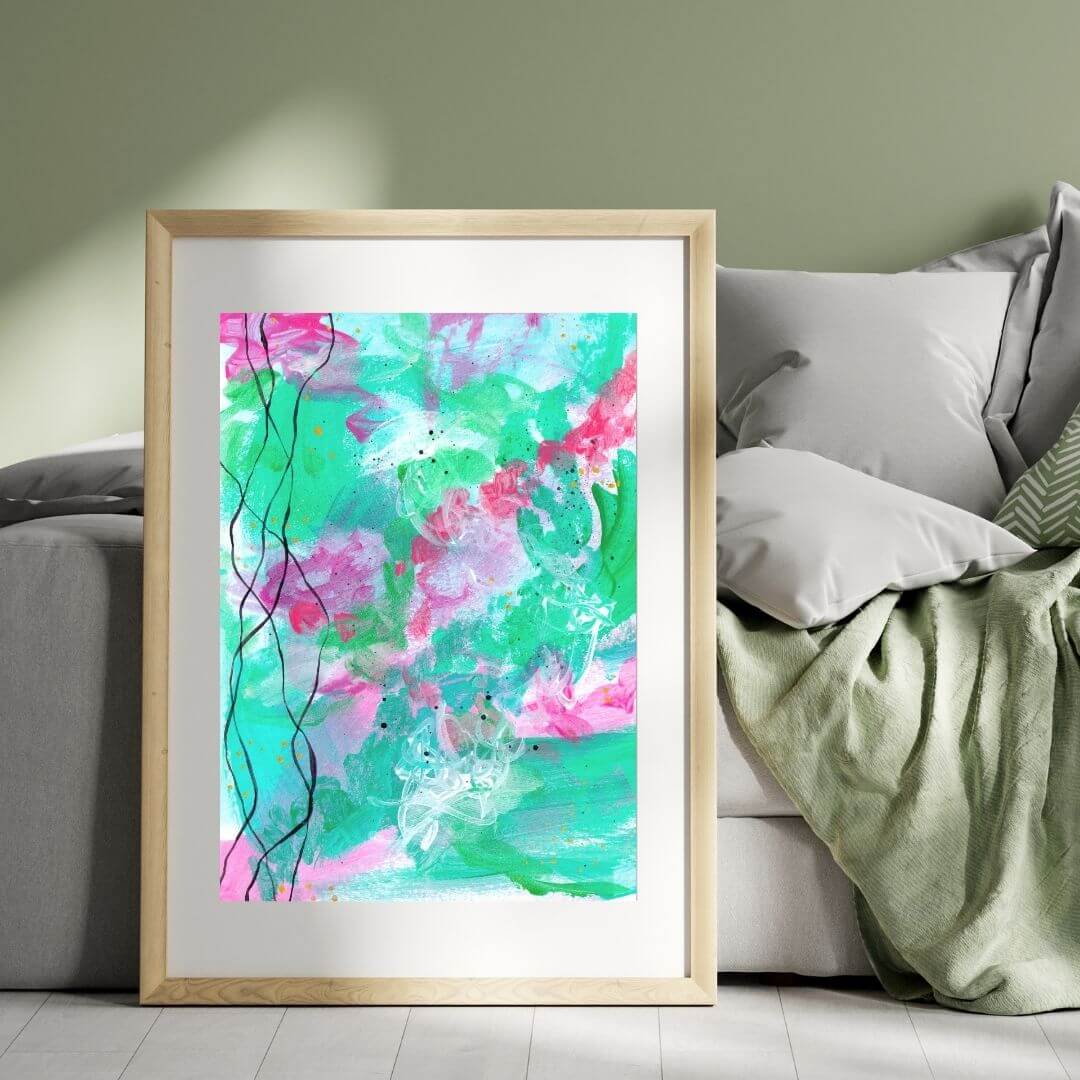

Why the Age of Public Collecting Is Ending
For decades, collecting art was inherently public. It was woven into a cultural ecosystem built on visibility, gallery openings, exhibition lists, auction records, and magazine features. A collector’s reputation was shaped not just by what they bought, but by how often that buying could be seen, referenced, and discussed. There was a clear script: serious collectors attended the right events, built relationships with curators, and let the world know when they had acquired something important.
That script doesn’t resonate anymore. At least not for everyone.
More and more, emotionally intelligent collectors are stepping away from the spotlight. They’re not trying to make statements. They’re not documenting their acquisitions on social media. They’re not interested in being perceived as culturally in-the-know. Their decisions are shaped by something quieter, a desire to feel, not to prove. And they’re choosing to engage with art in ways that don’t require external affirmation.
This doesn’t mean they’ve turned against the art world. It means they’ve outgrown the need to be validated by it.
They’re no longer attending art fairs out of obligation. They’re no longer collecting to keep up. They’re looking for art that speaks to them personally, pieces that hold emotional depth, not just critical acclaim. And most importantly, they’re seeking experiences that feel human, not performative. That often means bypassing traditional channels altogether.
The shift is subtle, but undeniable. Private showings are replacing gallery launches. Email conversations are replacing sales scripts. Instead of walking into a white cube and being told what’s valuable, these collectors are reading quietly, listening carefully, and following their instincts toward the work that moves them, whether or not it’s part of a current trend.
There’s a reason for this. The last decade made everything visible. Collecting became content. Art became a social signal, and the line between acquisition and image management blurred. But visibility doesn’t equal value. And for those who have already lived in highly public roles, founders, creatives, leaders, public-facing professionals, the idea of making one more visible decision often feels exhausting. They don’t need more exposure. They need depth.
In that context, privacy becomes a form of freedom. It allows space for the kind of connection that doesn’t need to be justified. It allows room for art to do what it’s meant to do, anchor, hold, challenge, soothe, without needing to translate itself for public approval. And that creates an entirely different atmosphere around collecting.
It’s no longer about accumulation. It’s about alignment.
The collector isn’t building a public-facing asset. They’re building a relationship, between themselves and the work, the space they live in, and the private emotions that shape how they move through the world. That relationship doesn’t benefit from being broadcast. It deepens in silence.
This is why the most meaningful collecting today is often happening behind closed doors. Not because it’s secretive, but because it’s sacred. These collectors aren’t trying to be exclusive. They’re trying to be honest. And honesty doesn’t always translate well in a system that’s still designed to reward spectacle.
The public script is wearing thin. For many, it no longer reflects what matters most. And in its place, a quieter model is emerging, one built on trust, emotional presence, and a willingness to choose art that won’t necessarily be recognised, but will be remembered.
Why Emotionally Intelligent Collectors Buy Differently
One of the most noticeable shifts in private art collecting is not just how people are buying, but why. The emotionally intelligent collector is no longer making decisions based on visibility, investment potential, or critical consensus. Their choices are rooted in something far more personal, emotional presence, inner alignment, and the atmosphere they want to live inside.
This is a very different mindset from traditional high-end collecting. It’s not reactive. It’s not performance-driven. It’s not about acquiring a piece to complete a room or signal a certain level of taste. It’s about choosing work that creates an emotional resonance, even if no one else sees it.
These buyers aren’t looking for validation. They’re looking for connection. And that changes everything.
Where the traditional approach to collecting often involved institutions, gatekeeping, and heavily mediated experiences, the emotionally intelligent collector prefers intimacy. They want to engage directly with the artist when possible. They value honesty over hype. They’re not browsing for decoration, they’re listening for something that moves them.
They often discover art through writing, longform storytelling, or quiet recommendation rather than through mass promotion. They appreciate the ability to explore slowly and privately. And they tend to respond to work that carries depth, not just visual impact, but emotional gravity.
For these collectors, a private art collecting experience isn’t just more comfortable, it’s more honest. It offers space for a decision to be shaped over time, not rushed or pressured by gallery timelines or industry events. It feels respectful. Considered. Human.
Many of them are also navigating something unspoken: emotional fatigue. They’ve been visible in other parts of their lives. They’ve succeeded in high-pressure spaces. They’re used to making decisions in public. And now, they want their personal spaces, including what they live with on their walls, to feel different. Quieter. More supportive.
This is where private art collecting really becomes meaningful.
It allows them to connect with art in a way that isn’t filtered through performance. There’s no need to explain why a certain piece resonates. No need to justify a preference. No need to keep up with the market or follow trends that feel disconnected from their inner world. They can choose based on feeling. And that feeling is usually tied to something deeply real: grief, change, survival, stillness, hope.
Emotionally intelligent collectors also tend to bring a sense of depth to the placement of their art. They’re not hanging work for status. They’re placing it in spaces where they pause, reflect, or come home to themselves. It might be a private room, a transitional space, or even a place that once held difficulty and now needs something new. They are curating an emotional environment, not just a visual one.
That shift, from curation to care, is subtle, but profound.
And it’s why the future of high-end collecting isn’t louder. It’s more attuned.
Private art collecting supports that attunement. It removes the noise. It slows down the process. It allows the decision to be led by feeling, not expectation. And in doing so, it gives the collector more than a piece of art, it gives them agency, presence, and a way to come closer to themselves.
That’s not a niche audience. That’s a growing one.
And it’s reshaping how serious work is chosen, lived with, and valued.
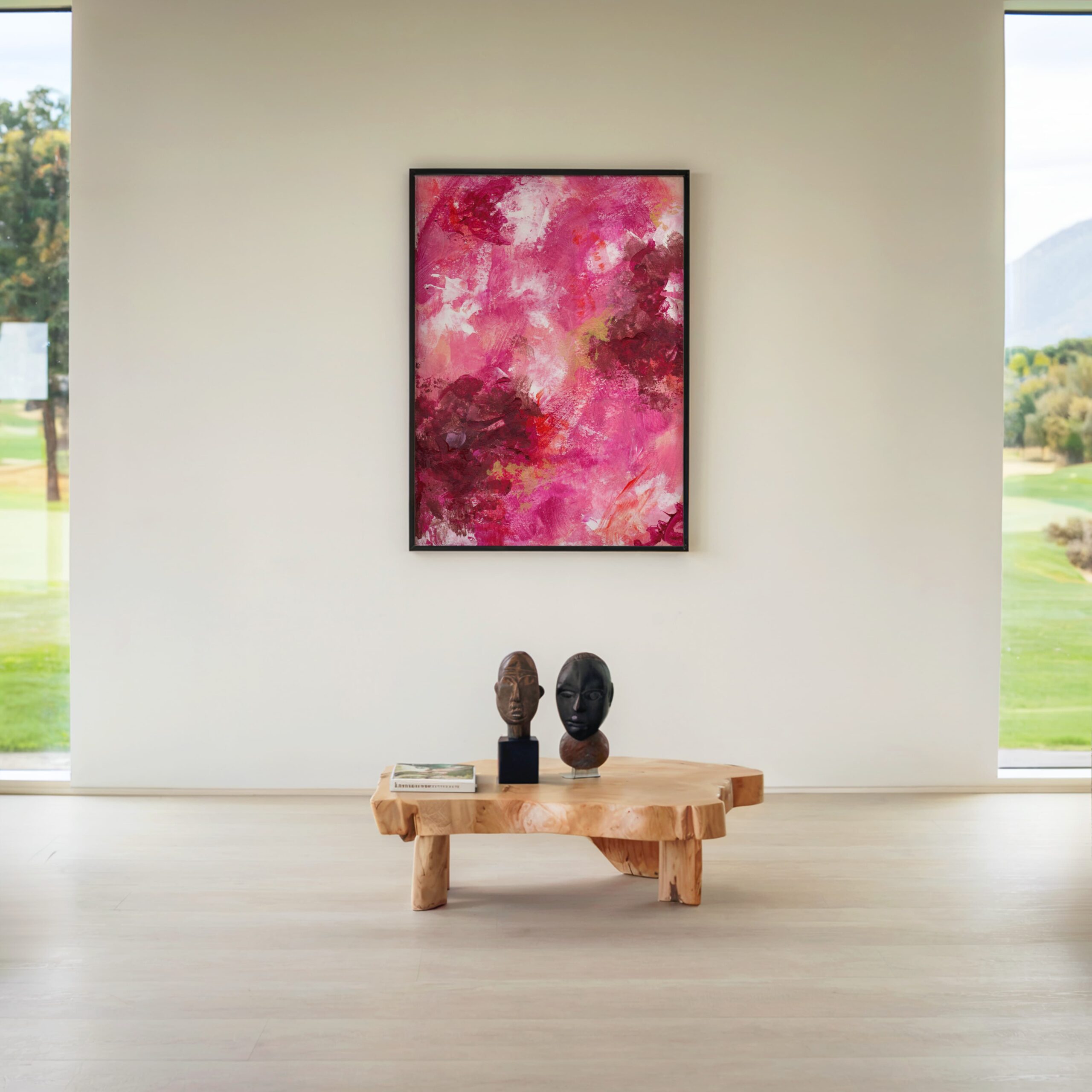
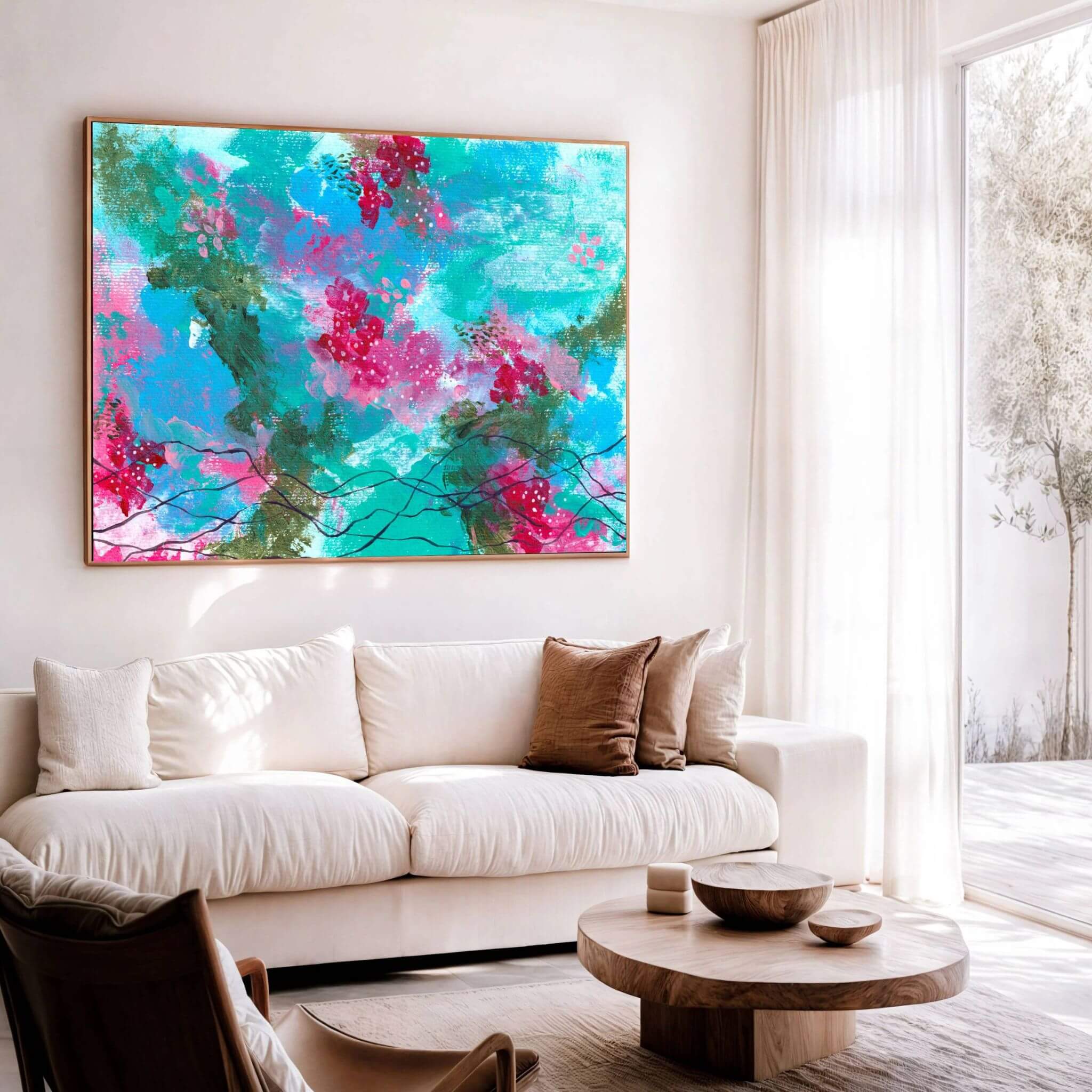
Privacy Isn’t About Hiding, It’s About Emotional Safety
There’s a common misconception that privacy in the art world is about exclusivity or secrecy. That if a collector doesn’t want to be seen, it must be because they’re avoiding scrutiny or hiding something. But for those engaged in private art collecting, privacy isn’t about withdrawal. It’s about protection. And more than that, it’s about creating emotional safety.
Art is personal. The decision to bring a piece into your home, to live with it, to let it shape your atmosphere, that’s not a neutral act. It’s intimate. Sometimes it’s even vulnerable. Especially when the work touches something raw or unresolved. Especially when it holds meaning that can’t be explained easily.
The rise of emotionally intelligent collecting has made that truth more visible. These are people who understand that not every meaningful experience should be shared publicly. They’re not trying to prove their depth. They’re trying to preserve it.
For them, privacy isn’t a status symbol. It’s a boundary. It’s a way to make room for honesty without the pressure of outside interpretation. When you remove the need to explain or justify why a piece matters to you, the decision becomes clearer. The connection becomes stronger. And the work itself has the space to do what it’s meant to do — not entertain, not impress, but anchor something in you that needed holding.
In public settings, that kind of connection often gets diluted. There are conversations to navigate. Expectations to manage. Opinions to absorb. Even in well-meaning environments, something gets lost, a layer of presence that can only exist when you’re not being watched.
Private art collecting removes that pressure. It lets the emotional truth of the work rise to the surface, not the backstory, not the credentials, not the critical context. Just the actual feeling it evokes, and whether that feeling belongs in your space.
That’s a very different experience than standing in a gallery surrounded by strangers, trying to decide if something moves you while someone explains why it should.
Privacy is what makes it safe to feel without filtering.
It allows you to make a decision that is for you, and only you.
No statements. No expectations. No performance.
And in a world where so many of our decisions are shaped by external noise, by visibility, by feedback, by comparison, having a space where you don’t have to manage any of that is not just comforting. It’s powerful.
This is what makes private art collecting emotionally sustainable. It gives the collector a sense of ownership not just over the work, but over the experience itself. It returns choice, trust, and stillness to a process that is too often rushed, loud, or transactional.
That kind of environment doesn’t just support better collecting.
It supports deeper living.
Stillness Over Spectacle, The New Definition of Luxury
The people who buy art now aren’t looking to be dazzled. They’ve seen spectacle. They’ve lived inside it. They know what it costs to keep up appearances. And they’re tired.
The new definition of luxury isn’t visual overload. It’s relief.
Private art collecting has become one of the clearest reflections of that shift. Because for many collectors, the real value of the work isn’t what it says about them, it’s how it makes them feel. They’re no longer filling homes with things that are meant to be seen. They’re choosing pieces that help them come back to themselves.
Stillness doesn’t perform. It doesn’t need to.
When someone walks into a space that’s been shaped with emotional intelligence, there’s a different kind of energy in the room. Nothing shouts. Nothing demands. But something holds. And for people who’ve spent years in high-stimulation environments, business, leadership, media, visibility, that kind of quiet is no longer a preference. It’s essential.
This is where private art collecting comes in. Not as a lifestyle choice, but as a response to something real. The collector isn’t trying to make a statement. They’re trying to build a space they can live in. A space that doesn’t ask for anything. A space that reflects who they are when they’re not performing.
Luxury, in that context, becomes less about what you show and more about what you protect. Time. Energy. Emotional bandwidth. The pieces that end up in these homes are chosen slowly. Often in silence. Often without a sales pitch. The decision comes from something internal, a recognition, a pull, a moment of stillness that doesn’t need to be named.
It’s not about rejecting beauty. It’s about redefining what beauty does.
Instead of impressing, it grounds.
Instead of grabbing attention, it offers rest.
These collectors aren’t chasing trends. They’re creating rooms they can breathe in. And they’re curating lives that don’t need to be constantly narrated online.
That’s where the new version of luxury lives now, not in spectacle, but in stillness.
This shift isn’t limited to collectors. Across the luxury world, there’s a wider move toward depth, discretion, and emotional resonance, what many are now calling quiet luxury.
And it’s changing what people choose to buy, how they buy it, and where that experience begins.
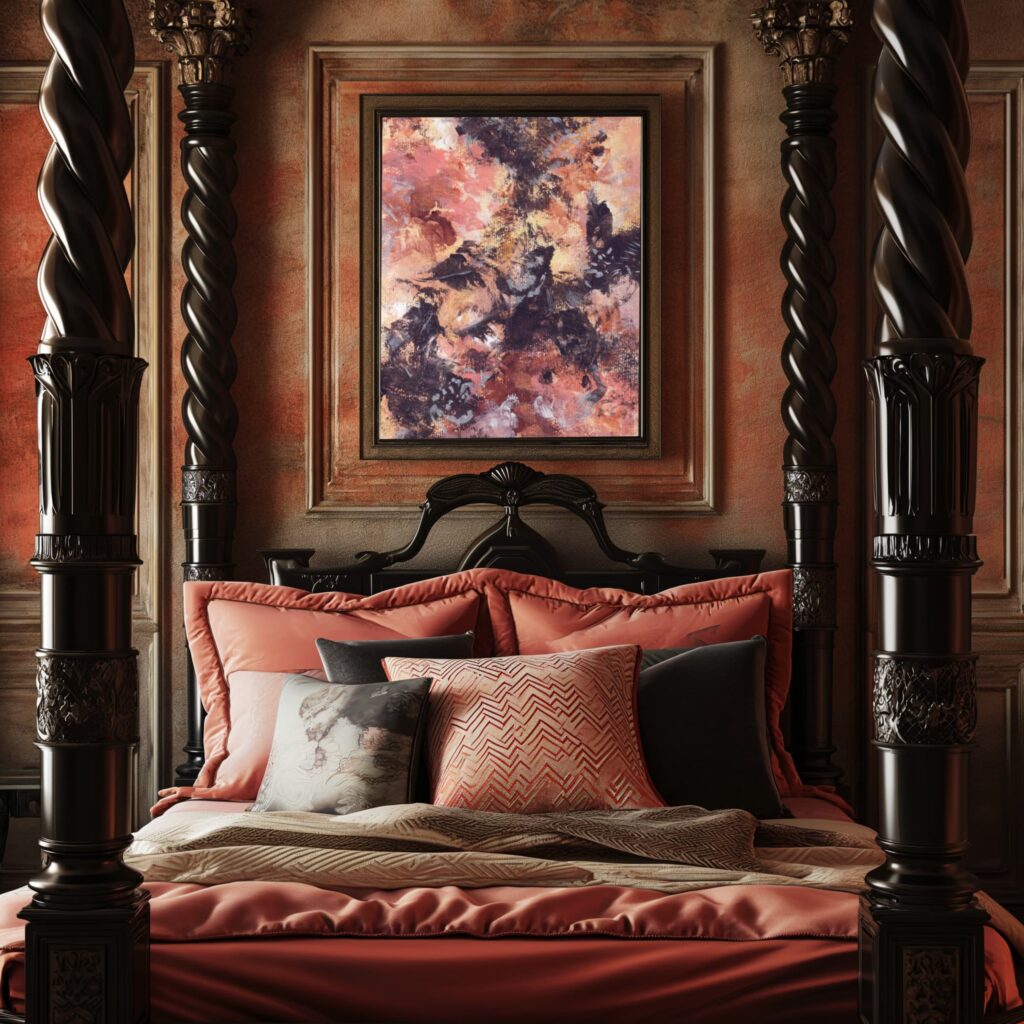

The Rise of Invitation-Only Art Experiences
Private art collecting has never been about mass visibility, but now more than ever, it’s moving toward something quieter: access by invitation. Not because of ego. Not because of elitism. But because intimacy changes the entire experience, for the artist, for the buyer, and for the work itself.
More collectors are stepping away from traditional gallery systems and seeking out direct, emotionally honest ways of discovering and acquiring art. They don’t want to browse a catalogue with twenty similar pieces listed by size. They don’t want to walk through a crowded opening, make small talk, and then be rushed toward a sale. They want to understand the work. They want to take their time. And they want to feel like the decision is personal, not performative.
This is where invitation-only experiences matter. They offer a different kind of space, one that’s curated not just around aesthetic preference or price point, but around emotional alignment.
These are not closed doors. They’re quiet doors.
And when a collector walks through one, they’re doing it with intention. They’re not responding to hype. They’re responding to something deeper, a feeling that the work might belong in their life, not just on their wall.
The shift toward private, invitation-only access is also a way of protecting the emotional weight of the work itself. When something is offered publicly and repeatedly, it can lose its charge. The energy behind it becomes more transactional. But when an artist chooses to share something quietly, with the right person, at the right time, that exchange becomes something else entirely. It becomes meaningful. It becomes remembered.
For collectors who are buying for emotional reasons, grief, growth, change, quiet celebration, that context matters. It changes how the work is received. It changes how it lives in the space. It changes the entire memory of the moment they decided to say yes.
This is why more artists, especially those working with emotionally resonant themes, are stepping away from mass selling and shifting toward private offers, unlisted pages, and email-only invitations. Not as a marketing tactic, but as a way to stay honest. As a way to protect the quality of the connection.
And collectors are responding. Not because it’s exclusive, but because it’s human.
When something is shared with you directly, with care, with thought, without pressure, the experience feels less like shopping and more like being trusted. That kind of trust isn’t scalable. But it is sustainable.
And that’s why private art collecting is evolving into something more relational. Less about transaction. More about timing. Less about proving taste. More about allowing truth.
When the Work Lives in a Room, Not a Feed
There’s a moment that happens after a piece has been chosen, after it’s arrived, been unwrapped, and found its place. The house is quiet. There’s no commentary. No one else is watching. And that’s when the work becomes something more than a purchase. That’s when it begins to live in the room.
This is what private art collecting makes possible.
Most people are used to seeing art through a screen. Online exhibitions, digital previews, social media posts. The image is immediate, but the experience is distant. It’s visual but not felt. Something might look beautiful in a post, but that doesn’t mean it holds anything once it’s in a room. And for emotionally intelligent collectors, that gap matters.
They’re not buying for a feed. They’re buying for how the piece makes them feel at 7:00 in the morning, before their day begins. For how it steadies them after a hard conversation. For how it anchors the atmosphere when they walk back into the room after being away.
Art doesn’t live online. It lives in space. And when that space is private, the work has a chance to breathe. It becomes part of the collector’s rhythm, something they don’t need to explain, or even notice consciously every day. But over time, it shapes the room. And in doing so, it shapes the person.
That’s not something you get when the decision is made through a browser window. Or when the priority is shareability. The best pieces aren’t always the ones that photograph well. They’re the ones that continue to matter when no one else is looking.
Private art collecting creates the conditions for that to happen. It allows the work to arrive slowly. Quietly. Without fanfare. And because there’s no pressure to post or perform, the experience becomes more honest. More nourishing. Less tangled in ego or strategy.
This shift is part of a wider one. In a world where everything is measured in engagement, likes, views, reactions, there’s something radical about choosing to live with art that exists for its own sake. Not as content. Not as status. But as presence.
There’s no algorithm for emotional weight.
You either feel it, or you don’t.
And when you do, it changes the room, not just how it looks, but how it holds you.
That’s what these collectors are responding to.
Not the image. The impact.
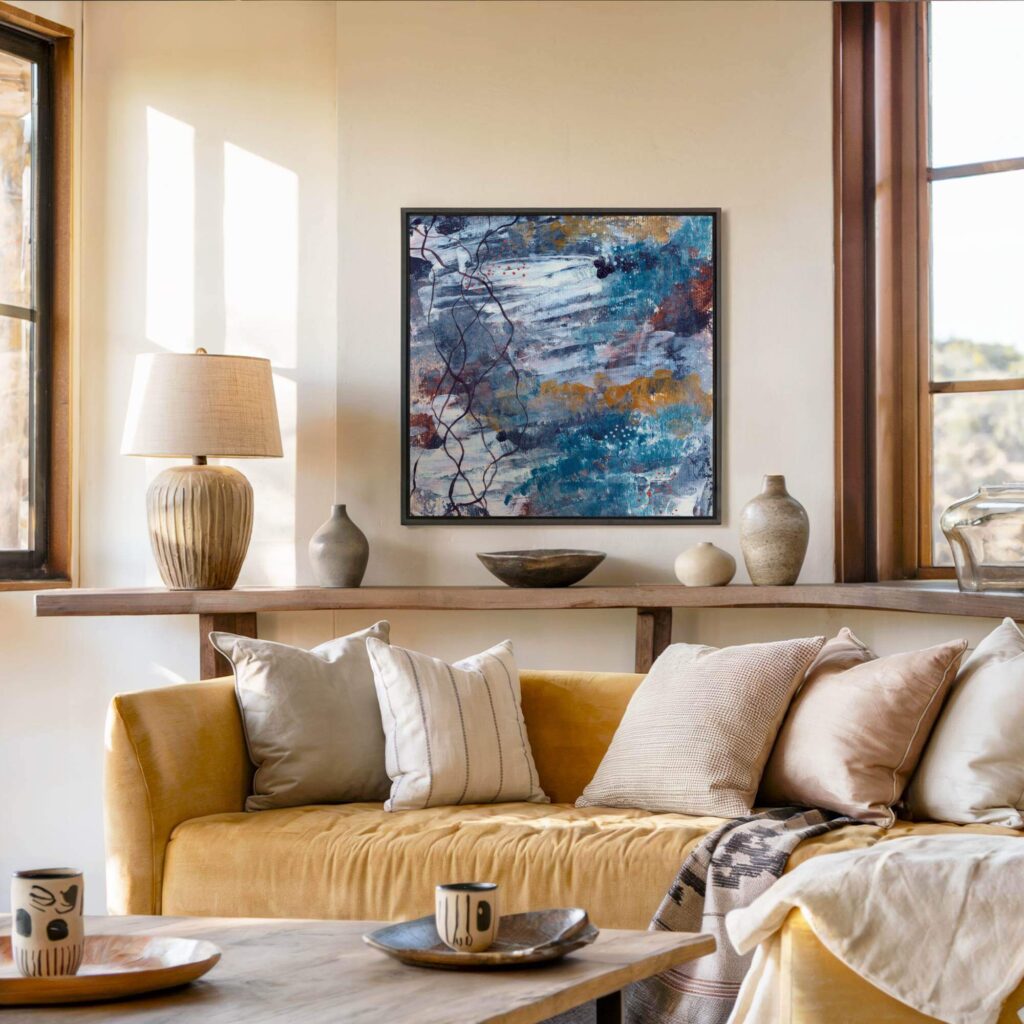

Why Private Art Collecting Is Now About Emotional Weight, Not Wall Space
When someone buys a piece of art through a private process, they’re not just acquiring an object. They’re choosing to live with something that reflects part of who they are, or part of what they’ve lived through. And that choice often has nothing to do with matching a space.
In private art collecting, the wall comes second.
The weight comes first.
Today’s collector isn’t thinking, “What will look good in this room?” They’re thinking, “What do I need this space to hold?” That question changes everything. It invites a different kind of decision, one shaped by feeling, memory, emotion, and energy. Not by colour schemes or interior design trends.
This is especially true for people who have carried a lot. Grief, burnout, reinvention, transitions no one else has seen. The work they’re drawn to often says the thing they haven’t said out loud. It meets them in places that aren’t verbal. It offers presence when words fall short.
And that kind of presence can’t be purchased through a filter.
Private art collecting gives space for this. It slows the process down. It removes the noise. It allows the collector to listen to what they’re actually drawn to, not what’s popular, not what’s being recommended, but what resonates on a deeper level. That resonance isn’t about clarity. It’s about recognition.
Sometimes a piece doesn’t make sense at first. But it stays with you. It lands somewhere that logic can’t touch. And in time, you realise it’s not just something you like, it’s something that knows you. Something that allows your space to speak a language you hadn’t heard before.
That’s what emotionally intelligent collectors are buying.
Not square footage. Not resale potential. Not décor.
They’re buying emotional permission.
To feel. To soften. To remember.
To come home to something that doesn’t ask them to perform.
The artwork might be large, or it might be small. It might live in a hallway, or above a fireplace, or in a room that no one else enters. But wherever it is, it changes the atmosphere. It tells the truth, quietly.
And that quiet is the point.
It’s what turns a beautiful space into a meaningful one.
This is why so many collectors are moving away from conventional buying paths.
Because what they’re looking for isn’t a perfect fit.
What they’re looking for is presence.
When Collecting Isn’t About Ownership, But About Relationship
There’s a fundamental difference between owning something and living with it. Ownership is transactional. It’s about possession, value, proof. But relationship, the kind that develops quietly between a person and a piece of art, is something else entirely.
That difference is at the heart of private art collecting.
Collectors who buy privately are not trying to build an inventory. They’re not thinking in terms of future resale or public display. They’re entering into a relationship with the work, one that often unfolds over time, and doesn’t always begin with certainty. Sometimes it starts with a pull. A quiet sense of, “I don’t know why, but this feels like it belongs with me.”
That feeling doesn’t always translate well in a public setting. There’s too much noise. Too many expectations around how a piece should be interpreted or what it represents. But in a private context, there’s room for something softer, an emotional exchange that doesn’t need to be articulated straight away.
Many of the collectors who choose to engage privately are people who already understand the complexity of relationship. They’ve lived long enough, or deep enough, to know that the most meaningful connections don’t always come with clarity at the beginning. Sometimes the art they choose only starts to make sense after it’s lived with them for a while.
In those cases, the relationship grows slowly. The work becomes a mirror. Or an anchor. Or a kind of presence that lives in the background, not demanding attention, but offering something steady.
That’s hard to quantify.
And it’s impossible to manufacture.
Which is exactly why it matters.
Private art collecting respects that process. It doesn’t rush the decision. It doesn’t interrupt it with pressure. It makes room for uncertainty. For resonance. For trust. It allows something unspoken to unfold, not because the collector needs the work, but because the work meets them in a way they didn’t expect.
And the truth is, those are the pieces that stay. Not just on the wall, but in the memory of a moment, a year, a chapter of life that changed everything.
Collectors who buy in this way often speak about the work not as a possession, but as something they live alongside. Something that carries part of their story. Something that stayed with them through a threshold, grief, stillness, reinvention, and became part of their home because of what it witnessed.
This kind of relationship can’t be mass-produced.
It has to be allowed.
And it begins with a different kind of invitation, not to own, but to listen.
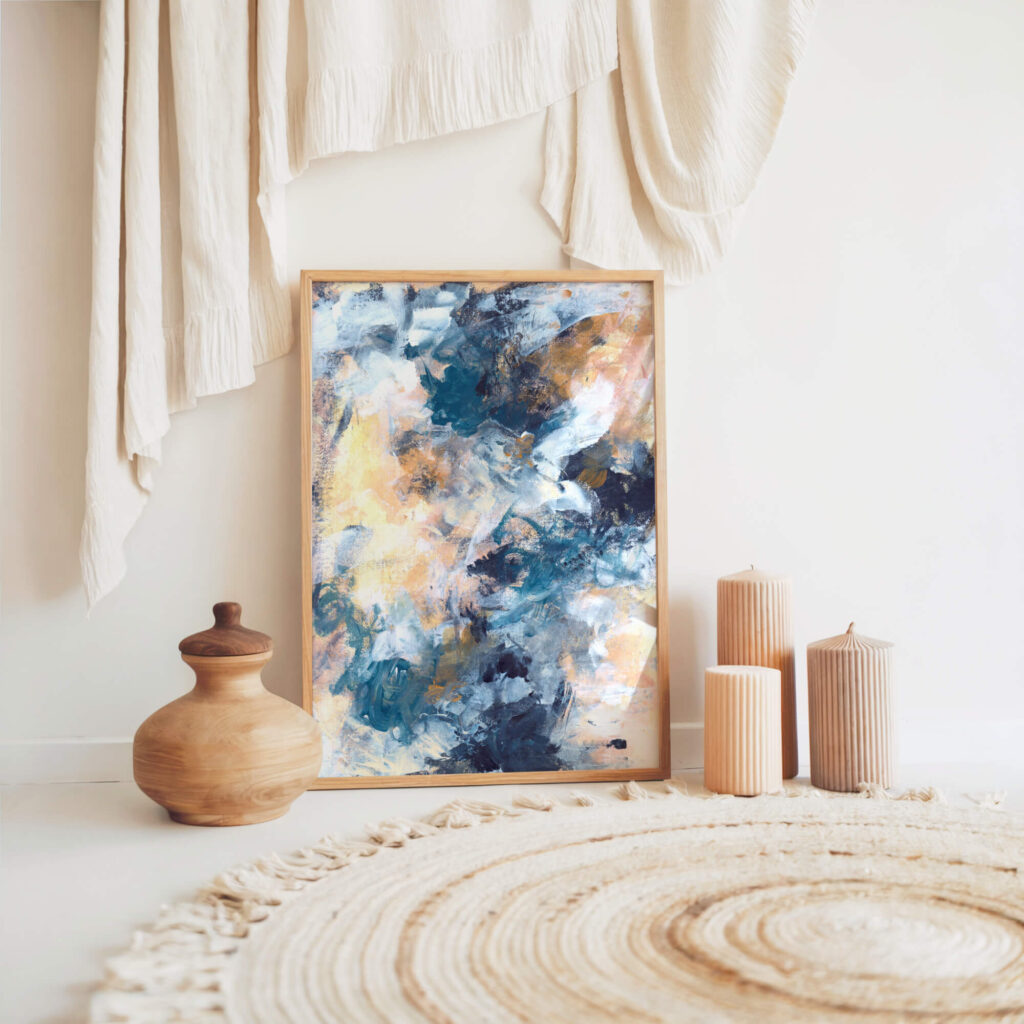
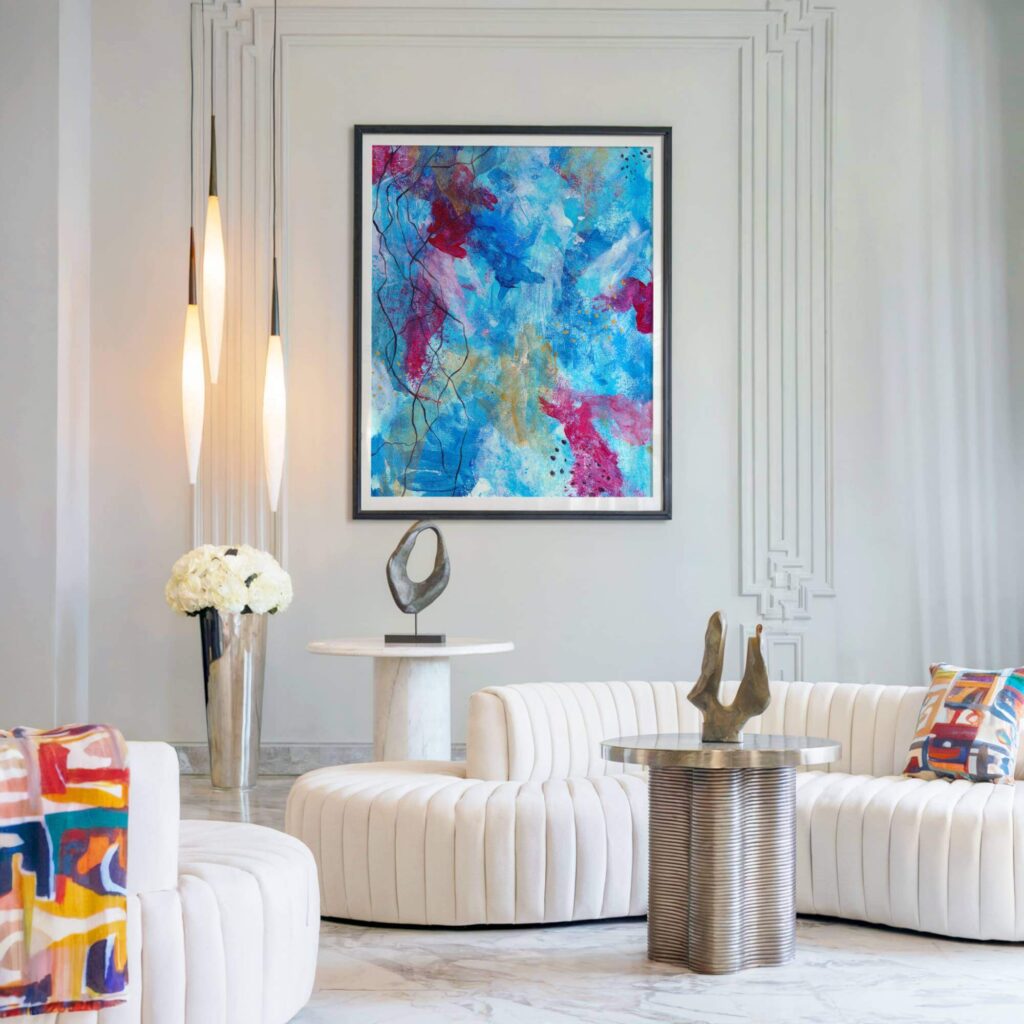
Slowness as a Buying Standard, Not a Barrier
In most industries, speed is treated as a virtue. The faster the response, the faster the sale. But in private art collecting, slowness isn’t a flaw in the process, it’s a marker of respect. It signals that something meaningful is happening, and that the decision being made is not just transactional. It’s personal.
Many emotionally intelligent collectors move slowly on purpose.
Not because they’re uncertain, but because they’re paying attention.
They’re listening for something real.
That kind of listening takes time.
The pressure to decide quickly, to reserve a piece before someone else buys it, to confirm a purchase during a studio visit, to commit before the window closes, feels completely misaligned with the reasons they’re buying in the first place. These are not impulsive purchases. They’re not about reacting to a moment of urgency.
They’re about responding to a deeper feeling that often arrives quietly, and unfolds gradually.
This is especially true when the work itself holds emotional weight.
Private art collecting often involves pieces that speak to grief, healing, or interior change, things that don’t reveal themselves in one conversation or one visit. The collector might need to revisit the piece in their mind. They might need to sit with what it stirred. They might need to walk around their own space and see if the energy it carries fits what they’re building.
And when the process allows for that, something powerful happens.
The decision becomes clear.
Not because someone pushed for it, but because the collector reached it themselves, without being rushed.
Slowness, in this context, creates integrity.
It ensures the piece is chosen from a place of recognition, not persuasion. It protects the emotional truth of the experience, instead of reducing it to a transaction. And it honours the reality that the best art is not chosen like furniture.
It’s chosen like memory.
Like story. Like relationship.
Artists who understand this are changing how they offer their work.
They’re creating space.
They’re allowing time.
They’re choosing not to follow up with pressure, but to trust the energy that led the person to the piece in the first place.
And buyers are responding. Not because they want to delay, but because they want to be sure, not sure in the commercial sense, but in the emotional one. Does the piece belong with them? Does it meet a moment they’re living through? Will it offer something that continues to matter years from now?
These are not quick questions.
And they don’t need quick answers.
Private art collecting gives the buyer the space to ask them honestly, and to move forward only when it feels right.
Why Fewer Pieces Now Hold More Meaning
Many of the collectors I work with aren’t trying to build a collection in the traditional sense. They’re not aiming to fill every room or hit a certain number of works. They’re choosing fewer pieces, and letting those choices carry more weight.
It’s not minimalism. It’s clarity.
They’re not collecting to decorate. They’re collecting because something in the work speaks to something in them. And when that kind of connection happens, it doesn’t need to be repeated ten more times.
One piece can be enough.
In private art collecting, that kind of restraint isn’t rare. It’s common.
The collector isn’t looking for variety.
They’re looking for something that lasts.
Not just physically, but emotionally.
They want work they can live with, not just glance at. Something that settles into the rhythm of the space. Something that continues to matter in six months, or six years, not because it’s timeless in an abstract way, but because it stays emotionally relevant. Because it holds a moment they don’t want to forget. Or a truth they’ve only just begun to live with.
Fewer pieces means there’s more space for the work to breathe.
It also means the choice has to be honest. There’s no filler. No placeholders. If something comes into the home, it’s there for a reason. And that reason usually can’t be explained in one sentence. It’s a feeling. A memory. A recognition that doesn’t need a justification.
This is a big part of why public galleries and large group shows can feel overwhelming to some buyers. Too much visual information. Too many voices. The pressure to move quickly. To respond. To choose. But the kind of work that holds you, the kind that actually belongs in a life, not just in a room, rarely arrives that way.
It arrives slowly.
Through a quiet introduction.
Or after reading something that stayed with you longer than expected.
Or through a conversation that wasn’t meant to lead to a sale, but did.
That’s what private art collecting supports.
Not accumulation.
Not display.
Just one real decision at a time, made with care, lived with fully.
My Offerings
Whether you’re a private collector, a wellness-focused brand, or a designer sourcing for a high-calibre project, I offer art that resonates deeply and subtly.

Collector's Vault
Canvas prints from the archive, made with emotional resonance and sustainable materials for spaces seeking depth.

Capsule Commission
Created privately, one at a time, through stillness and reflection. Limited spaces each season to preserve depth and intimacy.
The Last 10
Ultra-limited, hand-embellished editions. No more than ten will ever exist. Made to ground, steady, and hold presence at the highest tier.
Art That Speaks When You Stop Explaining It
One of the reasons private art collecting works so well for emotionally intelligent buyers is that it doesn’t demand explanation. You don’t have to know why something moves you.
You don’t have to translate it into language that makes sense to anyone else. You just have to feel it, and trust that feeling.
In public settings, people often feel pressure to articulate why they like something. To sound informed. To reference the artist’s background. To talk about form, colour, composition. But the most meaningful responses to art don’t start with analysis. They start with something felt in the body before the mind catches up.
That’s hard to talk about in a room full of people.
But it’s easy to recognise when you’re alone, or when the process is private.
In private art collecting, there’s space for that kind of response.
You’re not being watched.
You’re not being sold to.
You’re not being asked to summarise your taste in a sentence.
The piece either holds something for you, or it doesn’t.
Collectors who buy this way aren’t avoiding meaning. They just understand that some meaning is non-verbal. Some experiences are too raw, too personal, or too in-process to explain. And when a piece meets them in that space, it doesn’t need to be “understood” in the traditional sense. It just needs to stay.
Many of the people who collect my work don’t ask about the technique.
They don’t need a story.
They’ve already lived one.
They’re drawn to what the piece makes possible, the atmosphere it creates, the honesty it carries, the emotional stillness it invites. And when it speaks to them, they listen. Quietly. Without needing to name it.
That’s what makes the experience so grounding.
There’s no performance in it.
When something resonates, they don’t ask, “What does it mean?” They ask, “Can I live with this? Does it belong with me?” And those questions are enough.
Because when the work speaks to what you carry, even if you don’t fully understand why, it becomes part of your life. It doesn’t need to explain itself. And neither do you.
When You’re Done Performing, This Is What You Choose
There comes a point when performance stops working.
Not the theatrical kind, the everyday kind. The way you present yourself in rooms that expect a certain tone. The way you answer, “How are you?”
The way you move through the world with just enough energy to get by, even when that energy isn’t real. Over time, that kind of performance wears thin. And when it does, something shifts.
The people who collect art privately are often in that shift.
They’re done performing.
They don’t need to be seen as strong, successful, composed, or curated. They’ve lived through enough to know that honesty doesn’t always come with polish.
And they’ve started shaping their lives, and their homes, around what feels true, not what looks good.
Private art collecting fits that. Not as an aesthetic decision, but as a form of relief.
It allows the buyer to choose something that reflects where they are now, not who they used to be, and not who they were trying to become. The work doesn’t need to match anything. It doesn’t need to follow a theme. It doesn’t even need to be “understood” by anyone else. It just needs to meet them honestly, without performance.
That’s what makes this kind of collecting so emotionally sustainable.
You’re not buying for an audience. You’re not choosing for approval. You’re choosing because something in the work steadies you. Because it reminds you of who you are when no one else is watching. Because it anchors the room the way you wish your own body could anchor itself.
In public environments, that kind of decision can feel too exposed. Too open to interpretation. But when the process is private, you can move at your own pace. You don’t have to explain. You don’t have to justify. You can simply choose what feels right, and let that be enough.
This is what people buy when they’ve stopped trying to prove anything.
Not status. Not novelty.
Just something real.
Something that doesn’t ask them to perform, because they’ve already done enough of that.
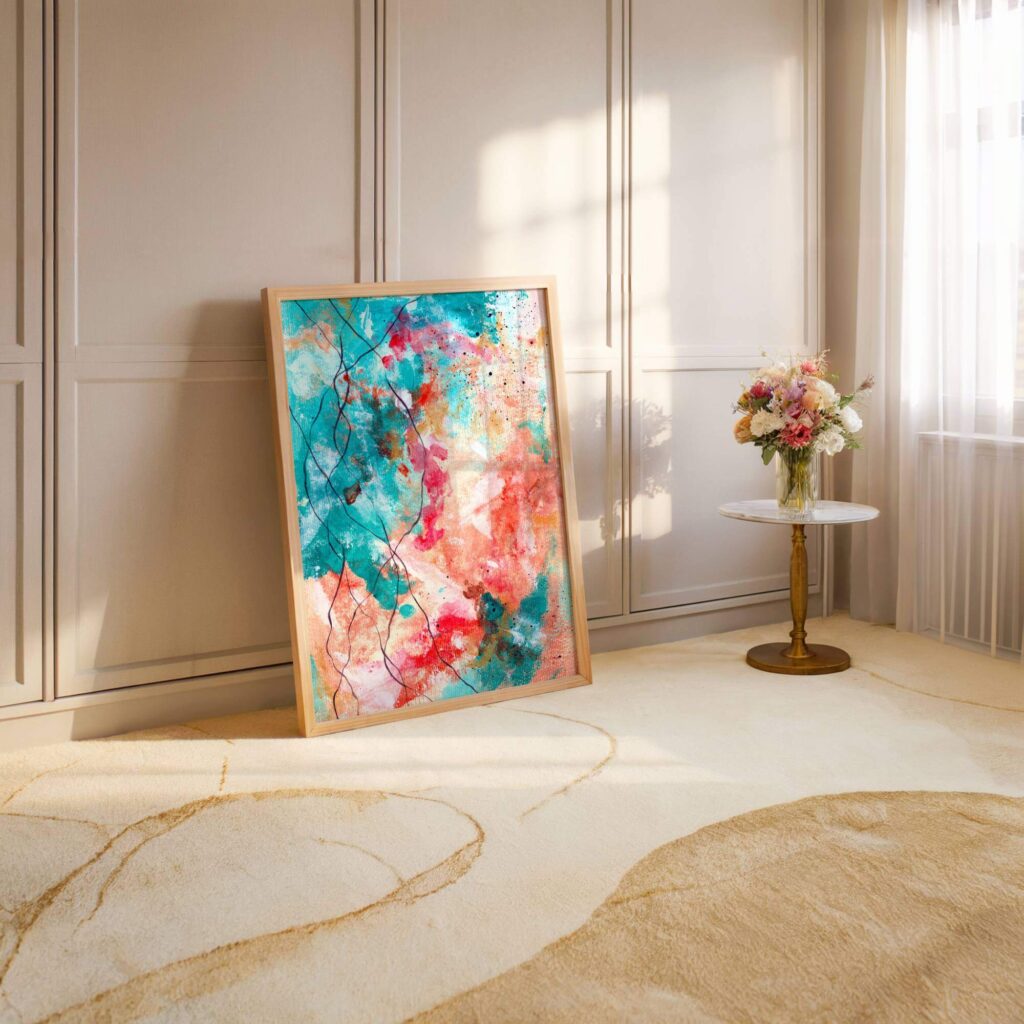
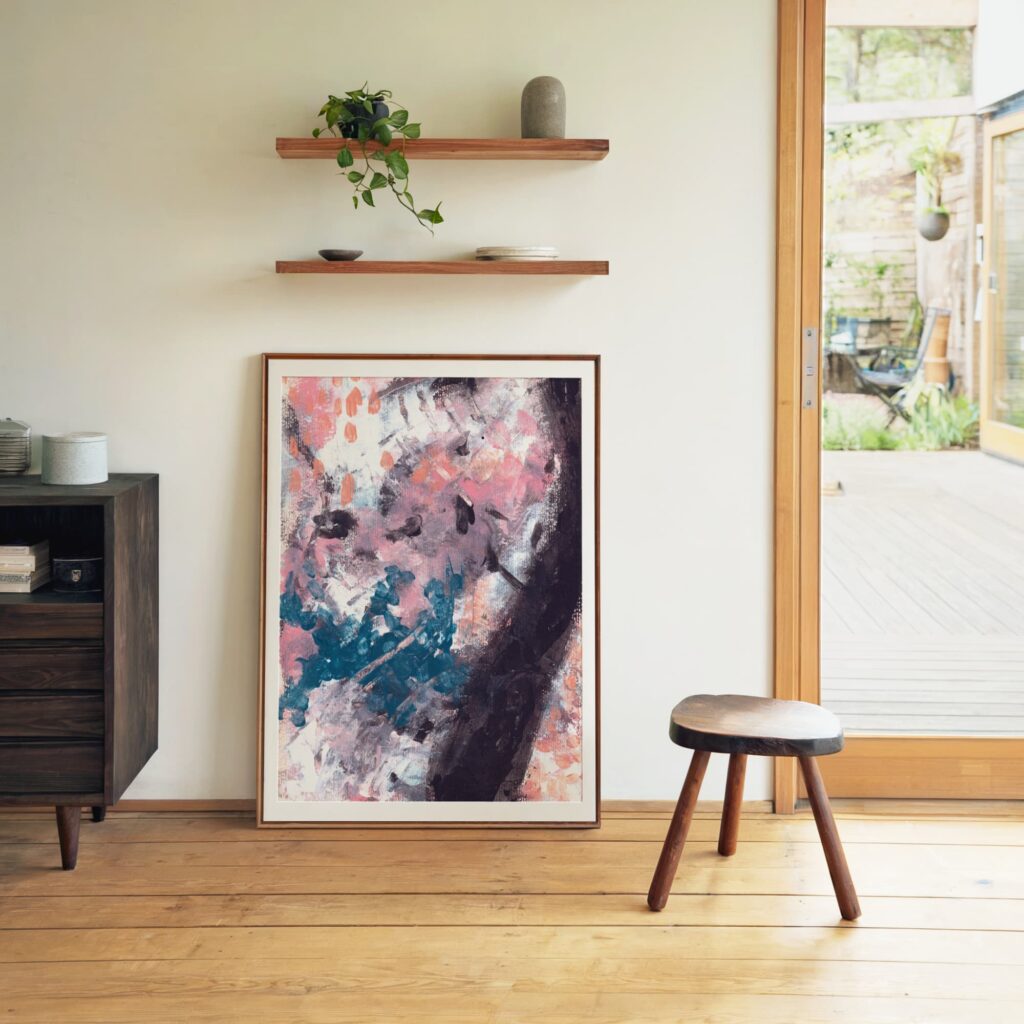
Private Doesn’t Mean Exclusive, It Means Aligned
There’s often a misunderstanding around private art collecting, that it’s about being selective for the sake of prestige, or keeping things hidden to increase perceived value. But in reality, for both the artist and the collector, privacy usually has nothing to do with status. It’s about creating an experience that actually fits how thoughtful decisions are made.
Most people don’t make emotionally intelligent choices under pressure. They don’t arrive at something meaningful because they were pushed, hyped, or sold to. They get there through stillness. Through space. Through being offered something in a way that feels respectful. And that’s what privacy makes possible.
It’s not about cutting people out. It’s about protecting the energy of the work and the emotional clarity of the choice.
The people who collect through private channels aren’t necessarily part of an inner circle. They’re often simply people who’ve reached out quietly, after reading something that stayed with them. Or after seeing a piece they didn’t forget. Or after recognising themselves in the tone of a website, or a book, or a single line of writing. They weren’t targeted. They weren’t filtered by income level or career title. They just found resonance, and followed it.
That kind of alignment can’t be manufactured, and it doesn’t need to be. It’s not strategic. It’s just what happens when the offer and the person are a match, not because someone pushed it, but because something landed.
And the truth is, most collectors don’t want the kind of access that requires a password or pedigree. They just want to be able to engage with the work without having to navigate spectacle, jargon, or a system that wasn’t designed with them in mind. They want to take their time. They want to feel what they feel. They want to make a decision that’s theirs, not something they were funneled toward through scarcity tactics.
When private art collecting works, it works because the energy is mutual.
No chasing.
No proving.
No managing optics.
Just a quiet recognition on both sides that this piece, in this moment, belongs here.
And that’s not about exclusivity.
That’s about honesty.
The Future of Collecting Is Quieter Than You Think
There’s been a lot of talk about where the art world is heading, new platforms, new technologies, new ways to buy and sell. But for the people who are choosing art based on how it makes them feel, not how it performs, the future of collecting isn’t louder or faster. It’s slower. Quieter. More human.
Private art collecting isn’t a trend that’s about to peak and disappear. It’s the direction things are already moving, especially among people who no longer find meaning in gallery openings, investment forecasts, or endless market chatter. They’re not disengaging from art. They’re simply changing how they engage with it.
The shift is happening on a personal level. One buyer at a time. One conversation at a time. One honest choice to live with a piece not because it’s collectible or impressive, but because it does something inside the room, and inside the person standing in front of it.
That kind of decision doesn’t make headlines.
But it does shape the future.
It reshapes how artists offer their work. It changes what kind of environments are created for serious buyers. It allows for deeper connection, slower timelines, and a kind of presence that doesn’t rely on external validation.
And it’s not limited to one kind of buyer. Some of the people moving toward this model are first-time collectors. Others have been buying for decades. What they have in common isn’t a background in art, it’s an emotional standard. They want to live with things that hold something real. They’re willing to wait for the right piece. And they’re more interested in how it feels to live with the work than how it might be perceived.
That’s what makes this shift durable. It’s not built on aesthetics or positioning. It’s built on emotional truth, and the ways people are learning to trust it again.
So while the market will keep evolving, and the language around art may keep changing, one thing will stay the same: the experience of standing in front of something that speaks to you, in a room that belongs to you, without needing to explain it to anyone else.
That’s where the future of collecting already lives.
Not in visibility.
In quiet.
In stillness.
In something you feel long before you understand.
Conclusion: A Different Kind of Legacy
Private art collecting isn’t just about how the work is chosen. It’s about how it’s lived with. Not everything ends up on a wall for others to admire. Some pieces are kept in personal spaces. Some are never spoken about publicly. Some carry stories no one else will ever hear.
That doesn’t make them less important.
It makes them more personal.
And in many ways, more lasting.
What’s shifting now in the world of serious collecting is not about exclusivity. It’s about emotional alignment. People are choosing art that holds them, quietly, honestly, without performance. And when something is chosen in that way, it leaves a different kind of mark. Not just on the space. But on the life it enters.
Collectors are no longer trying to be impressive.
They’re trying to be at home.
With themselves.
With their choices.
With the things they live with when no one is watching.
This is a different kind of legacy. One that isn’t built through press mentions or auction records, but through presence.
Through depth. Through stillness.
And the future belongs to those who understand that the most powerful pieces don’t always shout.
They stay. Read the book if you want to understand where this work comes from.
